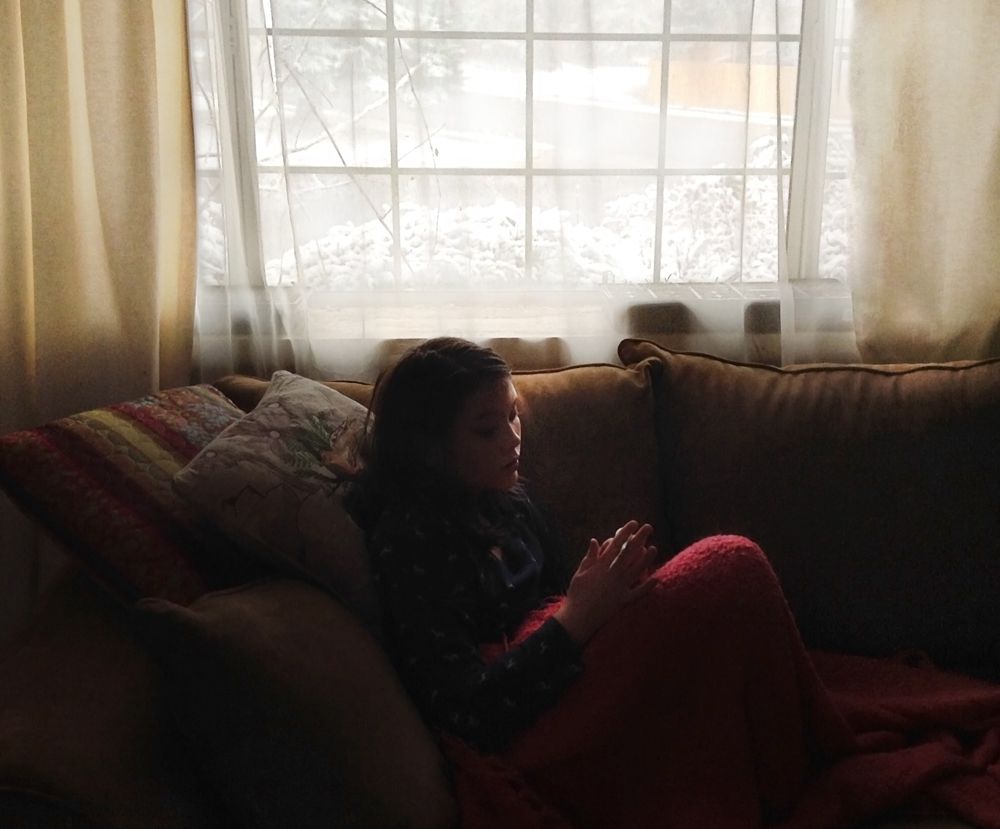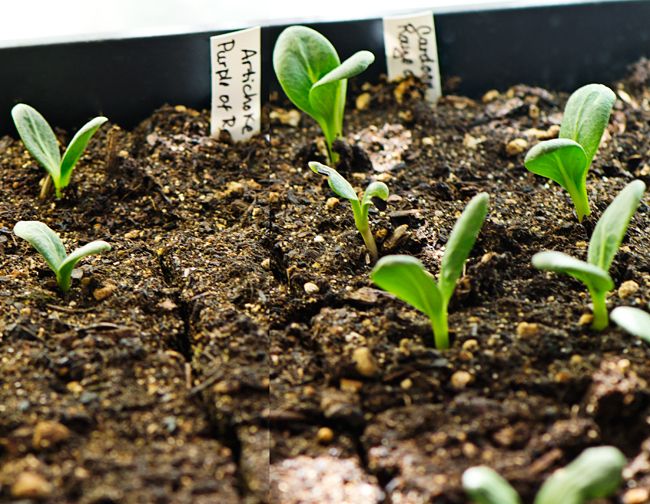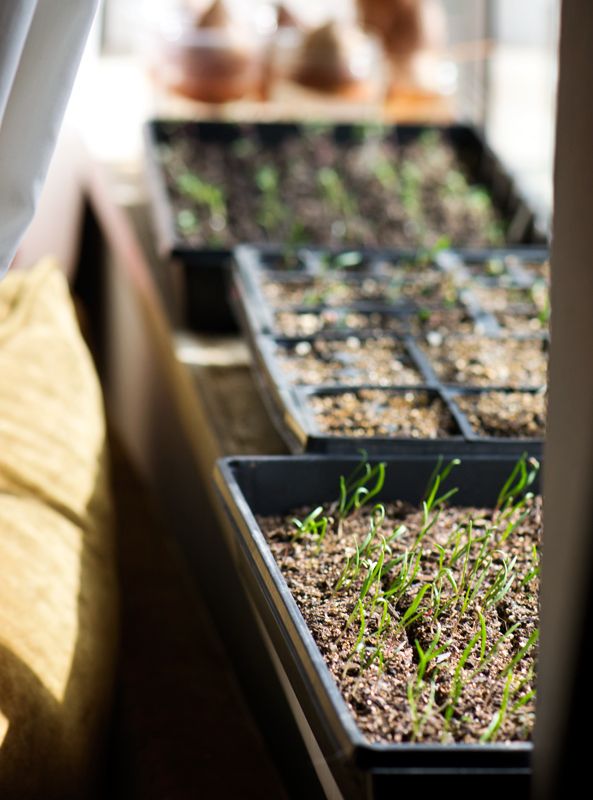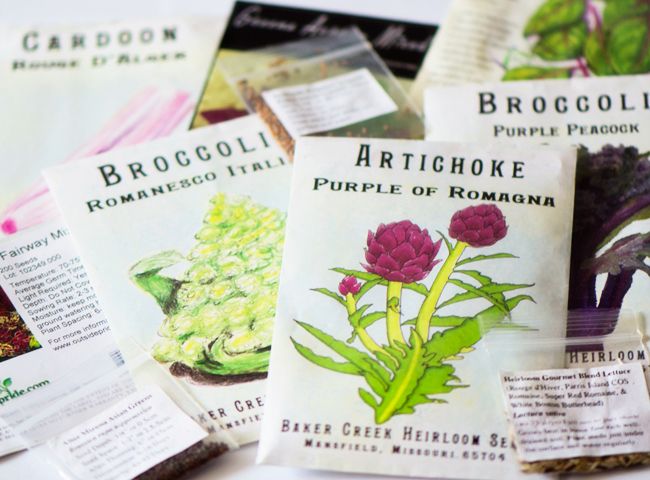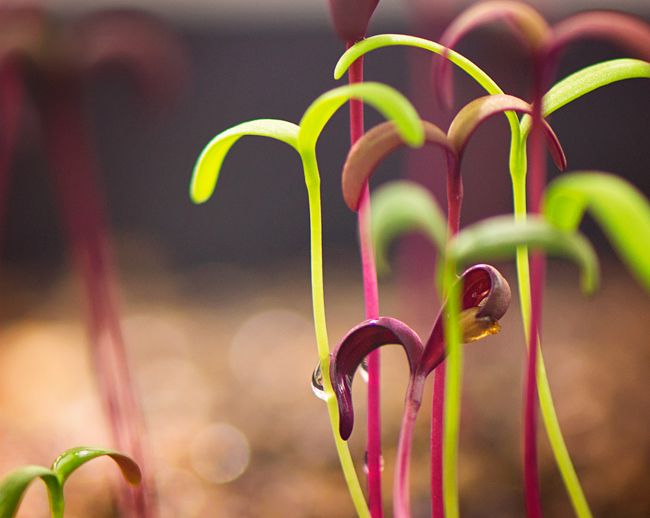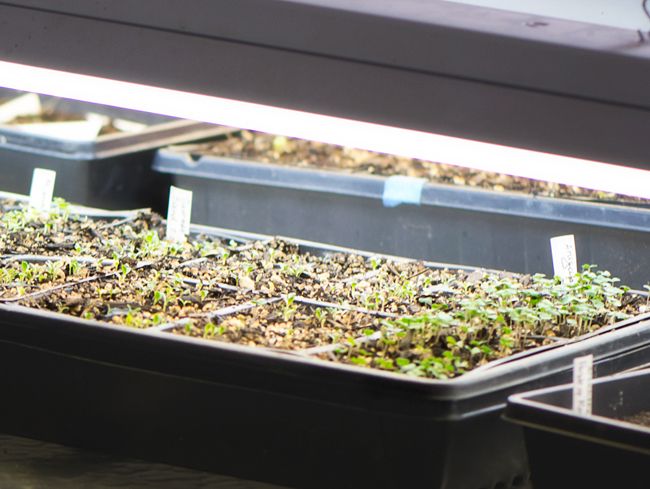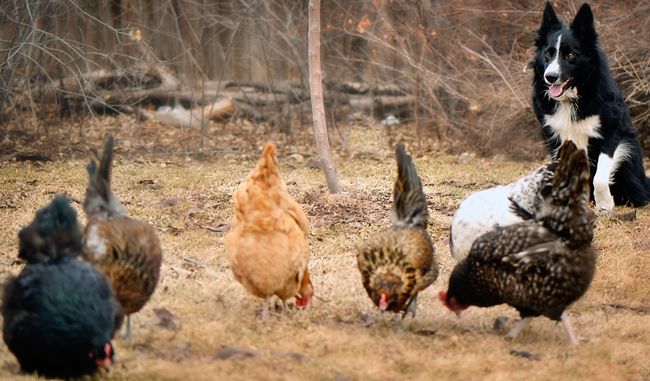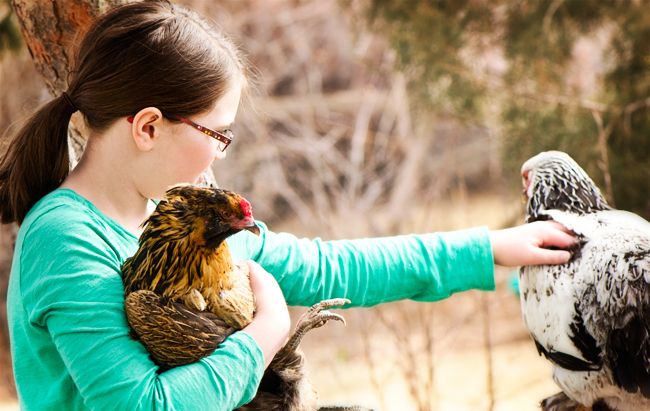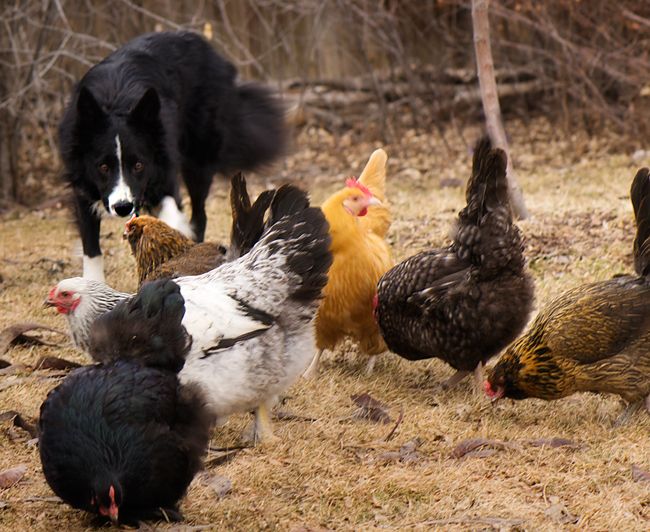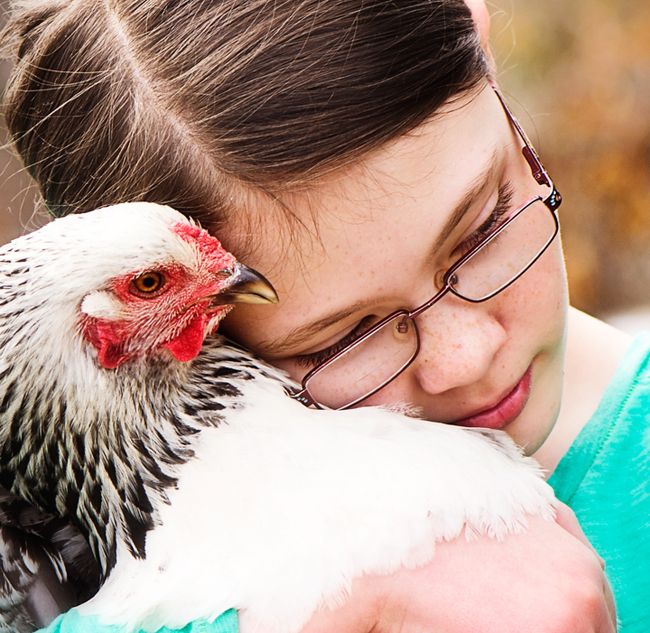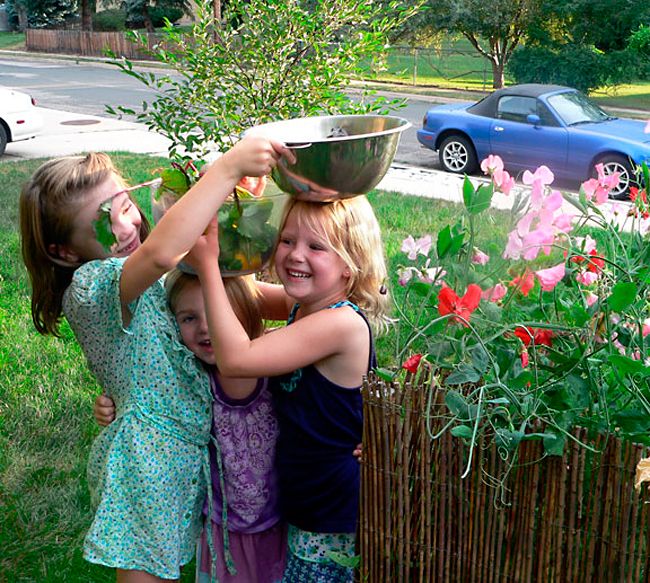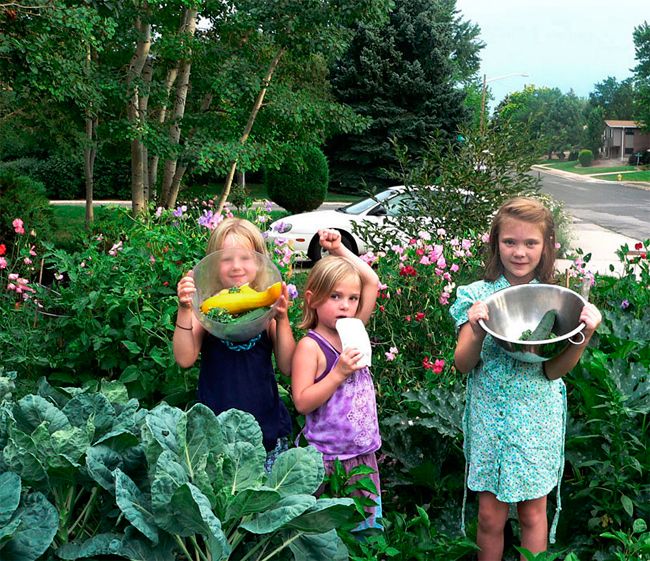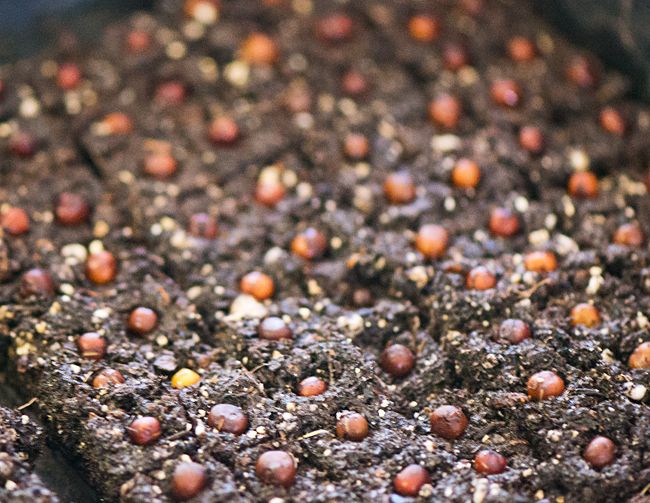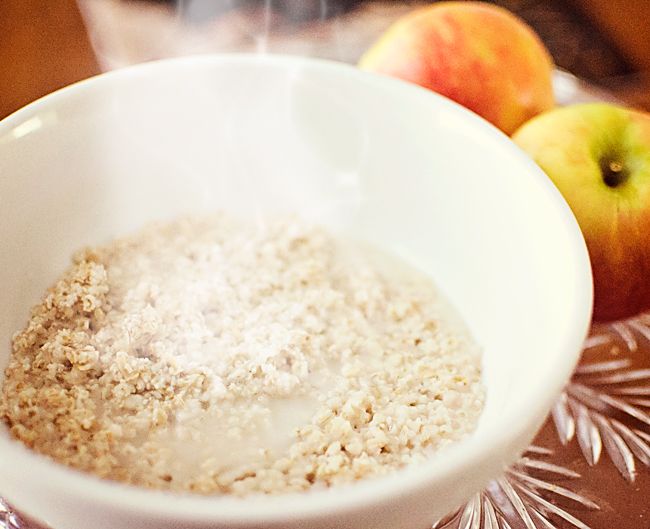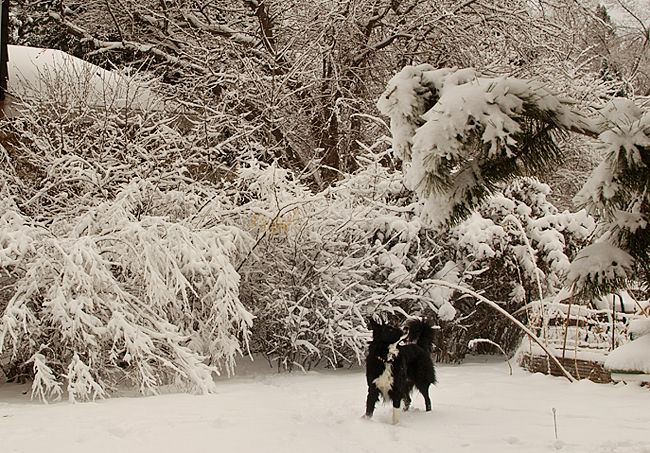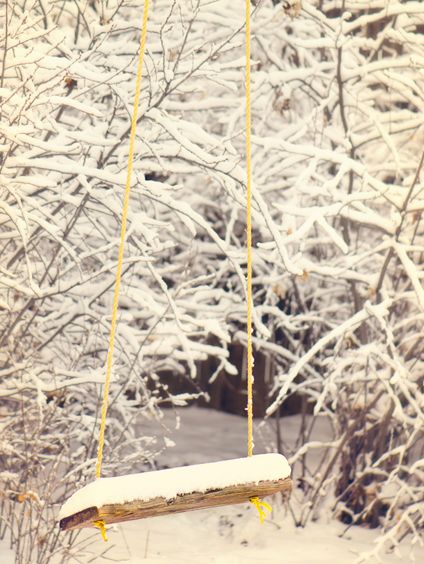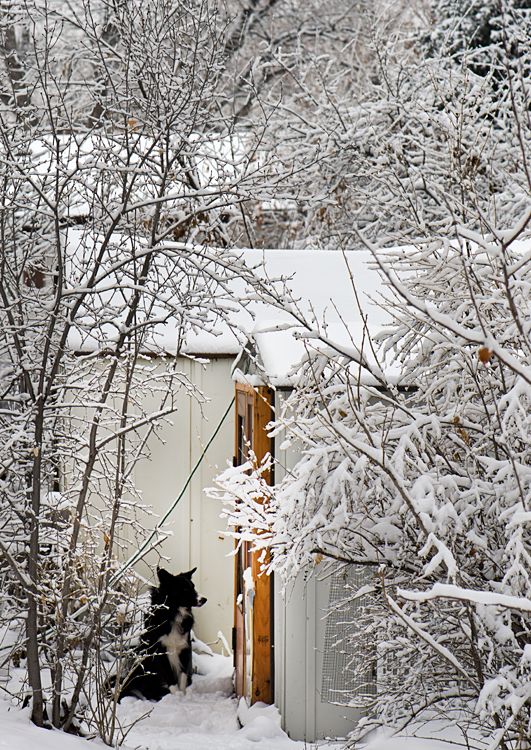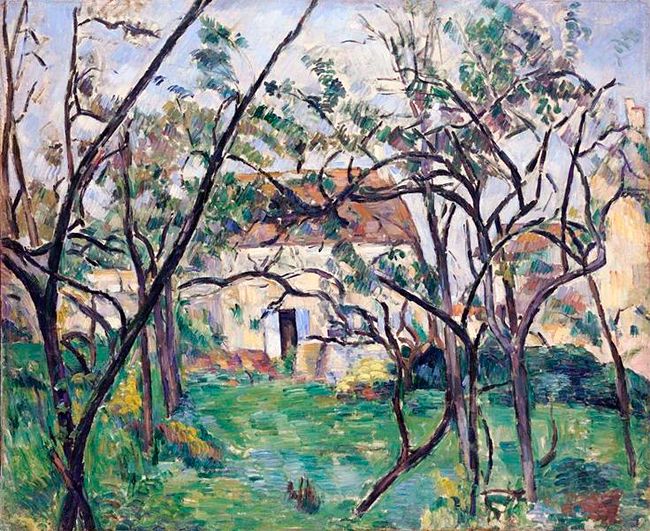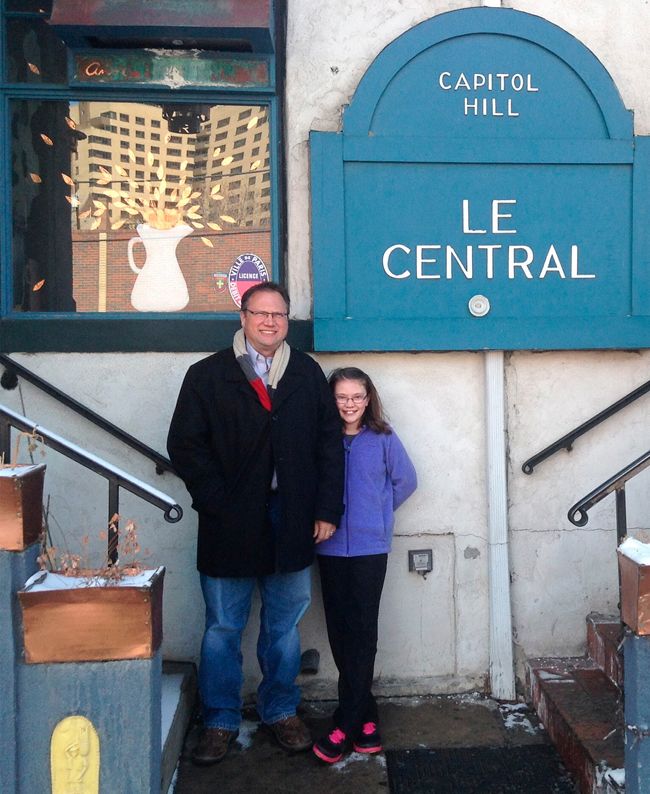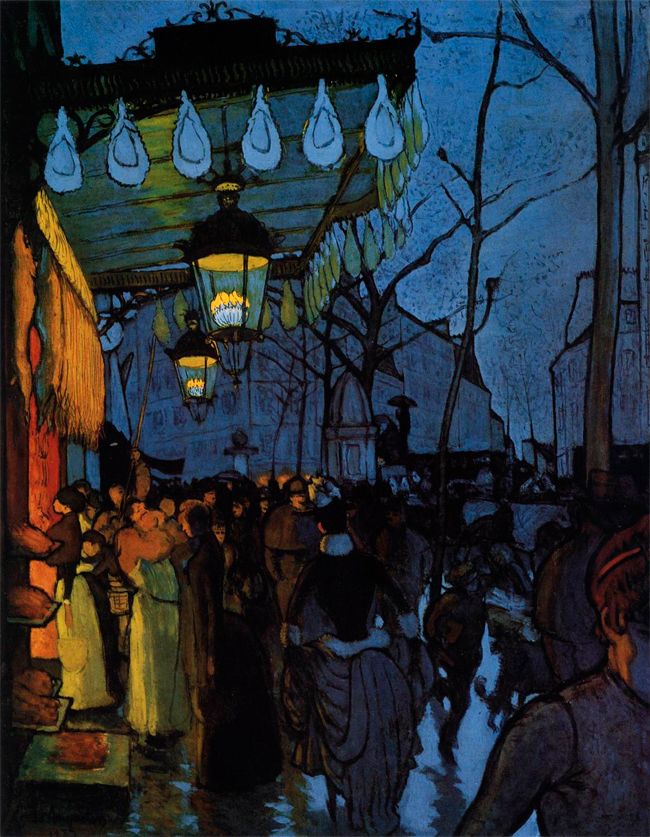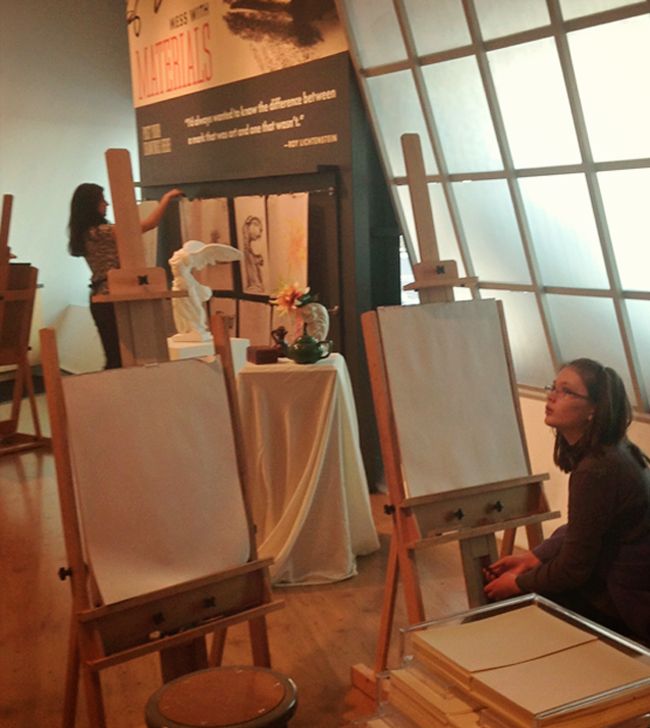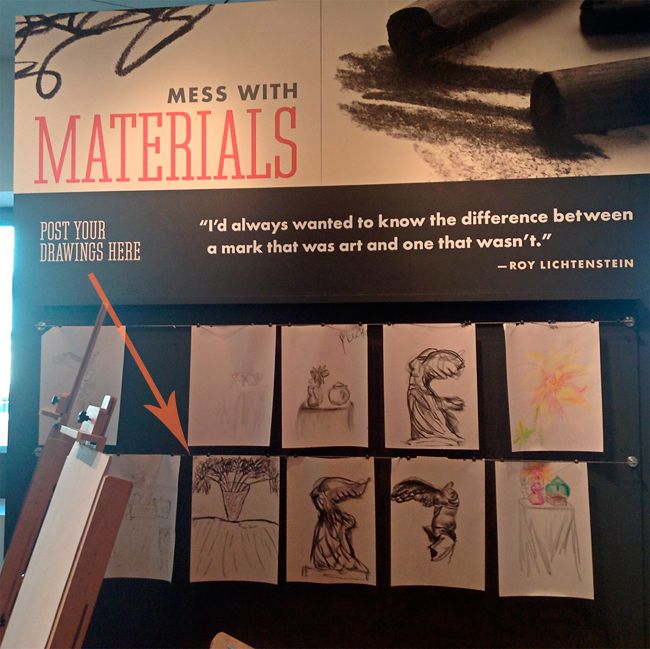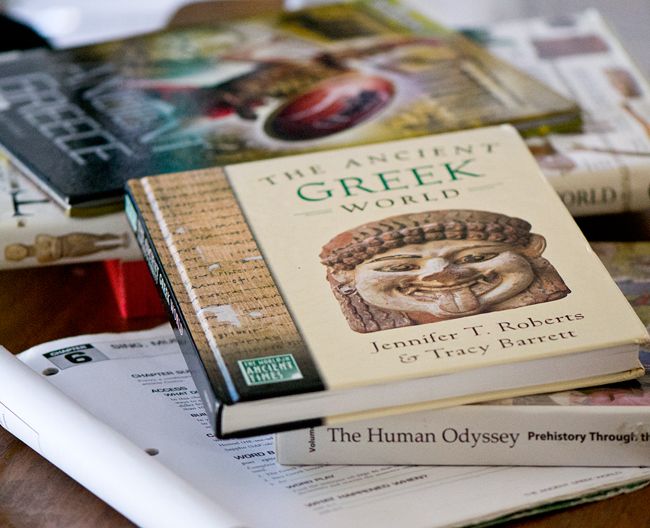17 March 2014
Happy St. Patrick's Day! Here is an old Irish blessing for each of you:
May the blessing of light be on you
light without and light within.
May the blessed sunlight shine on you
and warm your heart
till it glows like a great peat fire.
Tonight we had corned beef; carrots, turnips and apples glazed with apple cider; colcannon with cabbage, potatoes, spinach and scallions; and Irish soda bread. And Guinness of course.
One more blessing for good measure. This one was on the favors at our wedding:
Deep peace of the running wave to you.
Deep peace of the flowing air to you.
Deep peace of the quiet earth to you.
Deep peace of the shining stars to you.
Deep peace of the Son of Peace to you.
12 March 2014
Homeschool Sick Day
102 fever for two days, poor kid. This is one of the great perks of homeschooling. Snow keeps coming down outside, I don't have to drive anywhere, no worries about missing schoolwork and having hours of make-up homework when she goes back. She's been reading a lot and even did some math online. But mostly sleeping and listening to me read Emma to her.
Labels:
Homeschool
10 March 2014
March Seedling Progress
Here is some of the progress since I started the first seeds on February 14.
The artichokes are up! Some of them. They are pretty tricky to germinate. The cardoons keep coming and everything looks strong and healthy.
Salad greens, kale and broccoli varieties are getting ready to go out in the garden under frost cover, and free up space under the lights for the next round: peppers and eggplants.
Spinach (Bordeaux and regular green) and cabbages in the sunny front windowsill.
I'm trying to sprout sweet potatoes for the ornamental vines. If it works, I can transplant the slips when they grow out the top of the potatoes, root them in water, and have enough for my containers and a few for the flowerbeds. Next to them is Red Russian kale.
The artichokes are up! Some of them. They are pretty tricky to germinate. The cardoons keep coming and everything looks strong and healthy.
Salad greens, kale and broccoli varieties are getting ready to go out in the garden under frost cover, and free up space under the lights for the next round: peppers and eggplants.
Spinach (Bordeaux and regular green) and cabbages in the sunny front windowsill.
I'm trying to sprout sweet potatoes for the ornamental vines. If it works, I can transplant the slips when they grow out the top of the potatoes, root them in water, and have enough for my containers and a few for the flowerbeds. Next to them is Red Russian kale.
Labels:
Garden,
Seedlings,
Vegetables
04 March 2014
Seed Starting 2014
If my artichokes and cardoons germinate and make it out to the garden, I will be so happy. So far only the cardoons have sprouted, after 8 days in the most perfect indoor conditions I could figure out after a lot of reading.
I have 15 wintersow jugs outside with perennials and frost-hardy annuals. I learned a hard lesson the last few years. Most things germinate and grow amazingly well in their little greenhouses, but rabbits mow down all the work -- seeding, waiting/watering for months and then transplanting from the jugs -- in one day. The places I most need flowers can't be fenced. This might be a year of container gardening for a lot of things.
Mixed orach from Baker Creek. It's so ornamental I was hoping to use it as an accent plant, but it's an edible green like spinach. The seedlings glow like Bright Lights Swiss Chard.
R switched her room with the guest room this year, so her old room is now the seedling room. I put some salad greens in seed pots, but the soil blocks are working well for everything else. Alyssum dries out and dies in the micro seed blocks, even though I water it three times a day. It's on heat mats with the petunias, which are sprouting faster than I've ever seen them with this setup. Alyssum needs another plan though. It's one of the few things that survives the conditions of our front yard flower beds, so it's worth trying again. The front windowsill has cool-germinating cole crops like broccoli and cauliflower, and kales and leeks, and they are all going to town. I learned that the secret to spinach is to germinate it in damp paper towels first.
I have 15 wintersow jugs outside with perennials and frost-hardy annuals. I learned a hard lesson the last few years. Most things germinate and grow amazingly well in their little greenhouses, but rabbits mow down all the work -- seeding, waiting/watering for months and then transplanting from the jugs -- in one day. The places I most need flowers can't be fenced. This might be a year of container gardening for a lot of things.
Mixed orach from Baker Creek. It's so ornamental I was hoping to use it as an accent plant, but it's an edible green like spinach. The seedlings glow like Bright Lights Swiss Chard.
R switched her room with the guest room this year, so her old room is now the seedling room. I put some salad greens in seed pots, but the soil blocks are working well for everything else. Alyssum dries out and dies in the micro seed blocks, even though I water it three times a day. It's on heat mats with the petunias, which are sprouting faster than I've ever seen them with this setup. Alyssum needs another plan though. It's one of the few things that survives the conditions of our front yard flower beds, so it's worth trying again. The front windowsill has cool-germinating cole crops like broccoli and cauliflower, and kales and leeks, and they are all going to town. I learned that the secret to spinach is to germinate it in damp paper towels first.
We bought a pressurized garden sprayer this year, and it's even better than I expected for seedling watering. A perfect fine spray from a wand that you can target exactly where it needs to go, even to the far back rows of trays. I used to use a little spray bottle to mist seedlings, and my wrist would fall off after a few trays. You can't fit watering cans with big roses under the lights, and the other options would drown seedlings or leave corners dry. Now I have to make sure I'm not enthusiastically watering so much that my seeds damp off, because it's so fun and easy. It's a great investment, because once the garden is up and running, we can use the sprayer for compost tea, fish emulsion and foliar feeding, and organic bug spray. (Concoctions with Murphy's Oil soap and cayenne pepper.)
A lot of optimism in early March, when the seeding has been going along for a few weeks and things are popping up. The hard part is once the plants actually get outside in our harsh Colorado conditions. Drought and prolonged extreme heat and rabbits and bindweed, late spring and summer hail storms, it has been a rough few years lately for the garden. It's been a dry winter, so this doesn't promise to be the kind of spring that gets us off to a good start. I keep learning though, and trying again.
Labels:
Garden,
Seed Starting,
Seedlings,
Spring
27 February 2014
February Chickens
Obsessively herding his chickens is the only thing we've every found that tires Charlie out. This is all of them, except for Stellaluna, our Black Australorp, who has gone broody and was back in the coop sitting on some eggs. From the left is Egglantine, the Black Cochin; Fialka, the Ameraucana; Colette, the Buff Orpington; Fialka's sister Cricket, also an Ameraucana (they are the ones that lay blue/green eggs;) Marigold the Light Brahma; and Felicity the Cuckoo Maran.
It was a gorgeous, warm day. The ladies got in a lot of dust baths.
Don't look Charlie in the eye unless you have a clear conscience. He is very good at ferreting out disobedient thoughts in his hens.
Marigold is the cuddliest. She knows how to open the screen door with her beak, and tries to come in the house.She will follow you around chuckling at you until you pick her up.
I'm so proud of our hardy chicken girls, making it through stretches of below zero temperatures this winter without any problems. We've gotten kind of attached to them.
Labels:
Chickens
23 February 2014
Sweet Peas
One year not too long ago, we had sweet peas in the front yard garden that looked like this.
They were started from seed indoors and planted out as seedlings. In the years following, I direct-seeded them, and hardly any even bloomed.
This year I want them to be spilling over the fence again, so I'm going back to the space and labor-intensive method and starting them from seed. Here they are after soaking and scarifying with a nail clipper, in their soil blocks before being covered with the top layer of soil. 

I'm trying these for the first time, soil block makers for seedlings. The idea is that there are no plastic pots to buy /save/sterilize, more room for seedlings in each flat, and stronger seedlings that survive transplanting. I'm excited about using the micro blocks when it's time to plant basil and other plants that need heat to germinate. Heat mat real estate is so precious, and this should quadruple how many seedlings I can start on heat. The roots air prune, which means they reach the end of their blocks and stop growing, rather than circling around the pots. You can see how that would help with transplant shock. Eliot Coleman popularized this European method in the states. I'm diligent about saving and re-using the little black plastic seedling pots, but they eventually crack and give out, and this year mine all seem to be falling apart at the same time. So it's a great time to try something different.
I bought two sizes of block makers. The 3/4" mini blocks, and the larger 2" blocks that the minis can be potted up into once the seedlings are growing.
You fill and compact the block molds with soil, press down the plunger, and end up with perfect square blocks of soil ready for planting. There are different-sized dowel pin inserts that can be customized to make a hole just the right size for your seed. There is a special recipe for the soil block mix, because regular seedling mix won't hold together in the blocks. I think the micro might be too small for seeds as big as sweet peas, but I'm planting so many seeds that it's important to save space, so I'm giving it a try. I did one batch in the 2" blocks as a test, to see if those grow faster than the ones that start small and are potted up. Maybe one day I'll invest in root trainers, like Matt Matus in his Growing With Plants blog. His blog is so beautiful and well-written, and such an inspiration. Here's to a glorious fence-full of sweet peas again, if everything goes well.
13 February 2014
Wide World
There are more things in heaven and earth, Horatio,
Than are dreamt of in your philosophy. - Hamlet (1.5.167-8)
It is such a wide world, and a ten year old is just starting to see past the horizon of her own front yard. I love reading essays by people who are still curious and trying to figure it all out after eight or nine decades. Like this Roger Angell essay in the New Yorker, This Old Man: Life in the Nineties. When a child gets in the car after school most days bored and discouraged, and spends the evening after lessons and extracurriculars hunched over worksheets, something is out of balance. I believe in drilling and memorizing, and I actually believe in worksheets. You need to know math facts and grammar and how to spell. The capitals of the fifty states. That can be tedious, and it takes practice and repetition. You don't stumble across it while admiring beetles and running free while other kids are trapped in school. The suspicion of sentimentality, of lack of rigor, is what kept me away from looking at alternatives to our parish school for so long.
But a schooling that leaves inspiration out entirely, that's lacking the spark of learning--I'm realizing that that is not only equally wrong, it might be worse. R had a science teacher in fourth grade who would engage the kids in class, and stay after school to answer questions and point kids to books they might like. Learning he would not be back to teach her in fifth was one of the triggers to pull her out to homeschool. R would get into the car at the end of the day excited about ideas she learned in his class and ask to go to the library to learn more. I started to wonder what it would be like if she was given time to do that in all her subjects. Even if she fell behind for awhile on testable skills, what if we just spread the world out in front of her, watched what she landed on and liked, and gave her all the time she wanted to explore it?
"Study without desire spoils the memory, and it retains nothing that it takes in."
- Leonardo da Vinci
Whenever I panic that half the year is over and we have gone too deeply and not broadly enough, I think of this:
"For the mind does not require filling like a bottle, but rather, like wood, it only requires kindling to create in it an impulse to think independently and an ardent desire for the truth."
- Plutarch, "On Listening" in Moralia.
Laying kindling is a harder job than filling bottles with testable skills and facts. The future benefit to a child who is learning to think independently is hard to measure by having her fill in sets of circles halfway through fifth grade. In an era of education when the pendulum has swung so far off balance in favor of measurable results--where children are treated as generators of data points that are attached to financial rewards for schools, and increasingly, corporate interests--it's intimidating to swim against that tide.
There is an unsettling element of figuring it out as we go along that wakes me up with anxiety some nights. I keep praying to St. Catherine, and remind myself that R is changing this year. She makes connections across subjects. She rarely gets impatient and says "Just tell me what answer you want me to pick" as she did when we first started. She thinks critically about marketing when she sees ads, and identifies upselling on iPad apps. My friends have noticed that she's more poised with grownups. I notice a new confidence. She expects people to listen when she talks, even adults, and she listens to them as if they might have something interesting to say. She asks me to pause documentaries over and over so she can ask questions, unlike at the beginning of the year when she would just watch passively. Those are things we can't put back in the bottle now.
08 February 2014
Little Fox
R drew this fox during art time on Friday. I love the reddish coloring in the face. We love foxes, as long as they stay outside our fences and away from our chickens.
05 February 2014
Deep Freeze
It finally got up to 0 degrees at 2:00 today, after a low of -19 last night. The sun is out but everything feels suspended.
The cold frame in the garden is crusted over with ice. In a few months it will be closed, with green seedlings sprouting under the glass.
The chickens got an extra treat of hot oatmeal with their apples this morning. It's messy but they love it. I checked for frostbitten combs and feet, but they all seem to be fine.
Inside we are listening to the furnace crank on over and over, while the wind blows smoky snow past the windows. Our house is so bright and white inside when the sun reflects off the snow that our eyes get tired after awhile. We are working away at Greek history. R surprised me by showing me this picture from her history textbook (The Human Odyssey), and asking if this is the same painting we saw at the Art Museum last week. She's right! It's "Le Cheval de Troie (The Trojan horse)" (1874) by Henri-Paul Le Motte. I love when she puts ideas together across subjects like that.
We looked at some other artists' conceptions of the Trojan horse, some that looked like a realistic horse and some, like this amazing painted still from the 2004 movie Troy, that looked like they had been nailed together with ships' timbers. Or the "planks of fir" from Virgil's Aeneid.
The cold frame in the garden is crusted over with ice. In a few months it will be closed, with green seedlings sprouting under the glass.
The chickens got an extra treat of hot oatmeal with their apples this morning. It's messy but they love it. I checked for frostbitten combs and feet, but they all seem to be fine.
Inside we are listening to the furnace crank on over and over, while the wind blows smoky snow past the windows. Our house is so bright and white inside when the sun reflects off the snow that our eyes get tired after awhile. We are working away at Greek history. R surprised me by showing me this picture from her history textbook (The Human Odyssey), and asking if this is the same painting we saw at the Art Museum last week. She's right! It's "Le Cheval de Troie (The Trojan horse)" (1874) by Henri-Paul Le Motte. I love when she puts ideas together across subjects like that.
We looked at some other artists' conceptions of the Trojan horse, some that looked like a realistic horse and some, like this amazing painted still from the 2004 movie Troy, that looked like they had been nailed together with ships' timbers. Or the "planks of fir" from Virgil's Aeneid.
After many years have slipped by, the leaders of the Greeks,
opposed by the Fates, and damaged by the war,
build a horse of mountainous size, through Pallas’s divine art,
and weave planks of fir over its ribs:
they pretend it’s a votive offering: this rumour spreads.
They secretly hide a picked body of men, chosen by lot,
there, in the dark body, filling the belly and the huge
cavernous insides with armed warriors.
opposed by the Fates, and damaged by the war,
build a horse of mountainous size, through Pallas’s divine art,
and weave planks of fir over its ribs:
they pretend it’s a votive offering: this rumour spreads.
They secretly hide a picked body of men, chosen by lot,
there, in the dark body, filling the belly and the huge
cavernous insides with armed warriors.
- (Virgil's Aeneid, Book II)
Labels:
Chickens,
Homeschool,
Snow,
Winter
03 February 2014
January Is Rounded With a Snow
We are such stuff
As dreams are made on; and our little life
Is rounded with a sleep.
- The Tempest Act 4, Scene 1, 148-58
January closed with a big blustery snowstorm.
R's tree swing.
As dreams are made on; and our little life
Is rounded with a sleep.
- The Tempest Act 4, Scene 1, 148-58
January closed with a big blustery snowstorm.
Silver maple in a sugar snow.
I promise the chickens are o.k. Charlie. We let them tough it out so they'll be hardy enough for cold weather, but when it gets close to zero we put a heat lamp in their coop. Their waterer has a heated base also, so it never freezes. Charlie only trusts himself with their well-being.
Good dog.
Marshmallow roasting with Daddy after a long, cold afternoon sledding with the neighbors. Charlie used to hate the fire as a puppy. He would bark at it and run upstairs to glower from a safe distance. Gradually he got used to it and now he can relax and warm his fur next to it. Except if someone makes a blowing sound, to stoke the fire or put out a flaming marshmallow--that drives him crazy for some reason. I love all the border collie hyper-aware eccentricities. And that they are so happy to come inside for cuddles on laps when their feral outdoor time is done.
Labels:
Backyard,
Border Collie,
Charlie,
Snow,
Winter
29 January 2014
Passport to Paris at the Denver Art Museum
D had the day off yesterday, and we took off to see the Denver Art Museum's Passport to Paris Exhibit. R spent a long time looking at this Cezanne painting, House in the Country. She liked being able to get up close and examine the short rough parallel brushstrokes. We talked about how the branches gave it a kind of wild energy, with the house more serene and recessed in the background.
 We decided to make a special-occasion day of it, and start with a French meal at Le Central. I had moules frites au pistou. R didn't like the mussels, but she loved dipping her bread in the hot garlicky wine broth. Le Central has been around for 33 years, and the menu is authentic and affordable French country cooking.
We decided to make a special-occasion day of it, and start with a French meal at Le Central. I had moules frites au pistou. R didn't like the mussels, but she loved dipping her bread in the hot garlicky wine broth. Le Central has been around for 33 years, and the menu is authentic and affordable French country cooking.
We had our wedding rehearsal dinner here, on the beautiful back patio with lights twinkling and friends and family from across the country together in one room. I love this picture 11+ years later. The chef has brochures that talk about his background, hometown of Toulon and the style of cooking there. I made myself hold back and not push the "this is educational!" enthusiasm on R, and she ended up reading it and asking about Provence and Toulon and wanting to make some of the recipes.
The "Passport to Paris"exhibit featured Impressionist paintings on loan from other collections, and it was pretty spectacular. The first rooms were earlier works that placed them in the context of Louis XIV and life at Versailles, and revealed how changes in art and society mirrored each other. R liked the antiques, particularly the 18th century sedan chair and the description of aristocrats carried in them because the streets flowed with mud and raw sewage. She asked for a print of the painting above, Louis Anquetin's 'Avenue de Clichy,' so she could take it home and hang it next to her bed and pretend at night that she's walking down a nighttime street in Paris.
R said her favorite piece of the day was this endearing little menu drawn by Paul Gaugin in 1900, in watercolor and conté crayon, illustrating the La Fontaine fable of the fox and the crow. It was in the Drawing Room collection of French drawings, framed next to another Gauguin menu featuring a Breton and Tahitian woman talking having a conversation.
Before Christmas we had watched the lively and entertaining BBC series, The Impressionists: Painting and Revolution, with art writer Waldemar Januszczak. It was a revelation as he blew the dust off some of the clichés that trap impressionists on candy boxes and umbrellas and silk scarves. One of the saddest stories in the documentary was Gaugin's love for his children, and heartbreak when his wife left him and took them away because he failed to live up to her family's idea of a respectable middle class provider. That made this little menu all the more touching, since it was painted after Gaugin had traveled alone to Tahiti. It gives a glimpse into his relaxed humor with friends. From the museum's website, "The menu planned for the evening’s dinner appears in a whimsical combination of French and Tahitian. It began with aperitifs and “foutimaises assorties,” a made-up word derived from the word “foutaises,” meaning something silly."
We ended our day with a visit to the Art Studio on the first floor, that was set up with various stations to practice methods of drawing. Still life tableaux, poseable anatomical models of people and animals, easels, paper and every kind of medium from crayons to charcoal to sumi ink. Videos of working artists were playing, and you could pick up a book about drawing and sit down at one of the tables to study it. There was a station for scribble drawing, and one for making your own drawing machine.
This wall-size drawing machine used pens that could be tied at different lengths to trace arcs and circles. The Paul Klee quote says, "A drawing is simply a line going for a walk."
R's finished charcoal still life.
She pinned it to the art wall when we left.
We love the art museum, and this is one of the best days we've ever had there. Being able to visit in the middle of the day on a Tuesday is one of the best things about our homeschooling schedule.
 We decided to make a special-occasion day of it, and start with a French meal at Le Central. I had moules frites au pistou. R didn't like the mussels, but she loved dipping her bread in the hot garlicky wine broth. Le Central has been around for 33 years, and the menu is authentic and affordable French country cooking.
We decided to make a special-occasion day of it, and start with a French meal at Le Central. I had moules frites au pistou. R didn't like the mussels, but she loved dipping her bread in the hot garlicky wine broth. Le Central has been around for 33 years, and the menu is authentic and affordable French country cooking. We had our wedding rehearsal dinner here, on the beautiful back patio with lights twinkling and friends and family from across the country together in one room. I love this picture 11+ years later. The chef has brochures that talk about his background, hometown of Toulon and the style of cooking there. I made myself hold back and not push the "this is educational!" enthusiasm on R, and she ended up reading it and asking about Provence and Toulon and wanting to make some of the recipes.
The "Passport to Paris"exhibit featured Impressionist paintings on loan from other collections, and it was pretty spectacular. The first rooms were earlier works that placed them in the context of Louis XIV and life at Versailles, and revealed how changes in art and society mirrored each other. R liked the antiques, particularly the 18th century sedan chair and the description of aristocrats carried in them because the streets flowed with mud and raw sewage. She asked for a print of the painting above, Louis Anquetin's 'Avenue de Clichy,' so she could take it home and hang it next to her bed and pretend at night that she's walking down a nighttime street in Paris.
R said her favorite piece of the day was this endearing little menu drawn by Paul Gaugin in 1900, in watercolor and conté crayon, illustrating the La Fontaine fable of the fox and the crow. It was in the Drawing Room collection of French drawings, framed next to another Gauguin menu featuring a Breton and Tahitian woman talking having a conversation.
Before Christmas we had watched the lively and entertaining BBC series, The Impressionists: Painting and Revolution, with art writer Waldemar Januszczak. It was a revelation as he blew the dust off some of the clichés that trap impressionists on candy boxes and umbrellas and silk scarves. One of the saddest stories in the documentary was Gaugin's love for his children, and heartbreak when his wife left him and took them away because he failed to live up to her family's idea of a respectable middle class provider. That made this little menu all the more touching, since it was painted after Gaugin had traveled alone to Tahiti. It gives a glimpse into his relaxed humor with friends. From the museum's website, "The menu planned for the evening’s dinner appears in a whimsical combination of French and Tahitian. It began with aperitifs and “foutimaises assorties,” a made-up word derived from the word “foutaises,” meaning something silly."
We ended our day with a visit to the Art Studio on the first floor, that was set up with various stations to practice methods of drawing. Still life tableaux, poseable anatomical models of people and animals, easels, paper and every kind of medium from crayons to charcoal to sumi ink. Videos of working artists were playing, and you could pick up a book about drawing and sit down at one of the tables to study it. There was a station for scribble drawing, and one for making your own drawing machine.
This wall-size drawing machine used pens that could be tied at different lengths to trace arcs and circles. The Paul Klee quote says, "A drawing is simply a line going for a walk."
R's finished charcoal still life.
She pinned it to the art wall when we left.
We love the art museum, and this is one of the best days we've ever had there. Being able to visit in the middle of the day on a Tuesday is one of the best things about our homeschooling schedule.
Labels:
Art,
Homeschool,
Museum
27 January 2014
History Curriculum
Before I go into what we're working on for history this year, I'd like to clarify my earlier post. It's important to me to be fair to her school when I talk about our
reasons for leaving it. The school did a lot of things right. The staff is dedicated to teaching and instilling faith in their students. R had some great years there with passionate teachers, but also some discouraging ones, with teachers who seemed to be just putting in their time. We have five years of good memories and are grateful for what she learned there. By all accounts that school works well for a lot of kids. We also knew many families who transferred their kids out for various reasons, some that paralleled ours.
Again based on recommendations from the Well Trained Mind forums, we supplement the textbook with individual volumes from The World in Ancient Times series from Oxford University Press.
I feel nervous all the time, that we are missing important lessons or going too deeply but not broadly enough. When she goes back to school, it will be with students who have been preparing to do well on tests that cover specific material. Whether or not we agree with that, it's the academic world she will have to function in for many years to come, and I wonder if it's a mistake to lead her away from that approach. When we first started, I was surprised to see that R's skills are mostly limited to completing worksheets. She wants to choose from multiple choice bubbles, and gets impatient when I ask her to think critically. "What's the answer? Just tell me the answer you're looking for." That seems so fundamentally wrong to me, that I'm willing to take a risk to try to turn that tide. How will we feel if it turns out she's not testing as highly, because she's learning differently for right now?
D and I agree that we're taking the long view, and we have to be brave about it. In many ways, it's been like watching her brain wake up, and recapture the curiosity and confidence of her early childhood. She will read a textbook in after school hours because she's interested in, say, Mesopotamian cuneiform script. She wants to use it as a guide to make up her own symbol language to exchange notes with her friend E. Is she missing out because she's doing that instead of homework that covers more ground more shallowly, where her knowledge will be measured by a chapter test?
The fortunate thing about starting this in 2014 is the internet resources that are available now, and the guidance and encouragement from other parents who have been down this road.
One of the first subject areas I researched this summer was history/social studies. I felt a "could this really be true?" excitement when I saw how much we could cover with one-on-one instruction. I went to a Great Books college for undergrad, and I liked the idea of a classical curriculum. I looked at some curricula that we could just unbox and start teaching, and while they were tempting because I am so new and inexperienced in all this, we ended up putting together our own approach and sources. The Well Trained Mind forums were the most helpful source I found for researching and getting feedback from homeschooling parents. (Susan Wise Bauer's book The Well Trained Mind: A Guide to Classical Education at Home has been the best jumping-off point for us. It's an invaluable book.)
We decided to use K12's The Human Odyssey Volume 1: Prehistory Through the Middle Ages as our main text. K12 is a full curriculum, but we wanted to use only this book. I found this, and most of our books, used on Amazon or eBay. 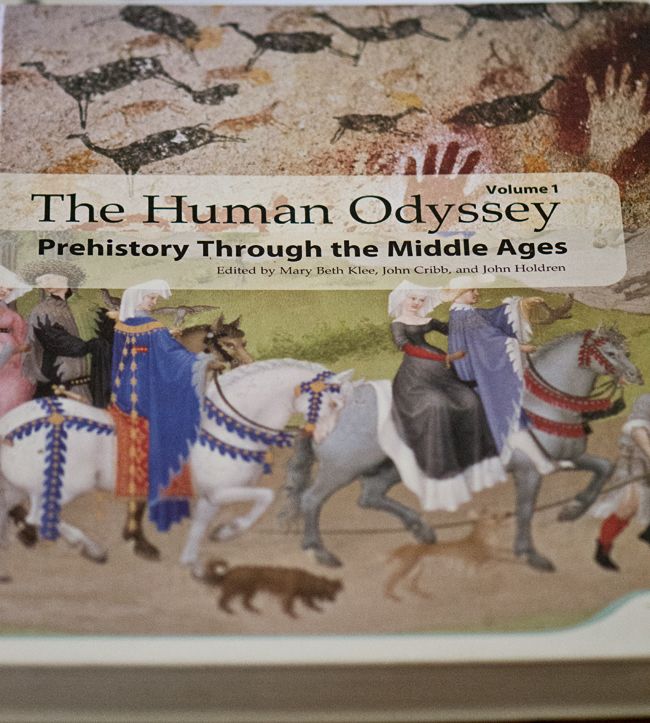

So far we use these Oxford Press books the most. They have turned out to be perfect, at just the
right reading level to be challenging without being so difficult that R
gets discouraged. We use the workbooks and study guides from the Oxford Press series for some volumes.
What we are both loving about homeschool is that we can take our time exploring all kinds of additional sources. My dad is a retired history professor and my mom a retired English teacher, and we have inherited some wonderful books from their library. Others come from our local library, or from thrift stores, library book sales, garage sales or online sources for used books.
We watch a lot of documentaries on Netflix and Amazon Prime, and check others out from the library. We also use our desktop computer and the iPad for interactive presentations, to research new words and questions that come up, and to go more deeply into ideas that R likes. She was interested in the pharaohs' journeys through the underworld, so we watched a National Geographic "Egyptian Secrets of the Afterlife" documentary. It dramatized the afterlife journey of Seti I guided by the Book of Gates, and made the history come alive for her.I feel nervous all the time, that we are missing important lessons or going too deeply but not broadly enough. When she goes back to school, it will be with students who have been preparing to do well on tests that cover specific material. Whether or not we agree with that, it's the academic world she will have to function in for many years to come, and I wonder if it's a mistake to lead her away from that approach. When we first started, I was surprised to see that R's skills are mostly limited to completing worksheets. She wants to choose from multiple choice bubbles, and gets impatient when I ask her to think critically. "What's the answer? Just tell me the answer you're looking for." That seems so fundamentally wrong to me, that I'm willing to take a risk to try to turn that tide. How will we feel if it turns out she's not testing as highly, because she's learning differently for right now?
D and I agree that we're taking the long view, and we have to be brave about it. In many ways, it's been like watching her brain wake up, and recapture the curiosity and confidence of her early childhood. She will read a textbook in after school hours because she's interested in, say, Mesopotamian cuneiform script. She wants to use it as a guide to make up her own symbol language to exchange notes with her friend E. Is she missing out because she's doing that instead of homework that covers more ground more shallowly, where her knowledge will be measured by a chapter test?
The fortunate thing about starting this in 2014 is the internet resources that are available now, and the guidance and encouragement from other parents who have been down this road.
Labels:
Homeschool,
School
23 January 2014
Bright New Chapter
First day of homeschool, August 2013
I've let this blog languish, in part because I started to feel
conflicted about my family's privacy. Even though I've been careful not to
publish names or identifying details and nothing embarrassing or private, as my daughter gets older I'm more aware
that her pictures and the details of her life are not necessarily mine to share. I started the blog when R was five and we had just moved
into this house. She's ten now, and it has been a wonderful record of these
years. I miss it. I've decided to start posting again, to track the new
adventure we've embarked on. We're homeschooling this year for the first time. The
blog name, Bright Refuge, seems apt for this new part of our lives. We're opening
the windows to new landscapes and prospects, with a solid home base underneath
us. Most importantly, I have my husband and daughter's permission to
share these photos and details.
As we came to the end of fourth grade last year in the
Catholic school where R has gone since kindergarten, I couldn't shake a discouraged,
dissatisfied feeling. It seemed like we were always settling. It wasn't good
enough, and she wasn't happy, but the alternatives seemed out of the question.
This is our parish, and our faith is at the center of our lives. We bought our
house because it was easy driving distance to school and church. We had put in a lot of years (and volunteer hours!) in this school, and we loved our school friends.
But the messages kept coming to me at odd moments. Aren't you ashamed to be only half-invested in life like this? Why are you trying to convince yourself that this is as good as it's going to get? Why are you calmly accepting that your sunny, curious little child spends most of her day bored and sullen and resentful? And worse. Miserable and resigned to being bullied. Feeling invisible; given only cursory attention from teachers who were grateful that she made their lives easier by being a quiet, well-behaved good student.
But the messages kept coming to me at odd moments. Aren't you ashamed to be only half-invested in life like this? Why are you trying to convince yourself that this is as good as it's going to get? Why are you calmly accepting that your sunny, curious little child spends most of her day bored and sullen and resentful? And worse. Miserable and resigned to being bullied. Feeling invisible; given only cursory attention from teachers who were grateful that she made their lives easier by being a quiet, well-behaved good student.
She worked for weeks on a book report and took great care
with her character descriptions, and when she read it aloud to the class they
mocked her for doing more work than she needed to. The teacher said sarcastically,
"Wow R, you really outdid yourself," and she came home crying and
ashamed. None of it was outrageously evil or damaging. I liked the teacher
personally, and the kids were good kids for the most part. But that incident
stuck with me as a dull heartache. A growing conviction that she deserved
better than she was getting, and it was my fault.
I'm in my third of four years at the Denver Catholic Biblical School. This year, we're studying the Old Testament Prophets. Our summer reading assignment was Eugene Peterson's brilliant book about the prophet Jeremiah: Run With the Horses: The Quest for Life At Its Best. It made me ashamed of my passivity. What happened to my courage? In Jeremiah 12:5, God says to the prophet, "If you have raced with men on foot and they have worn you out, how can you compete with horses? If you stumble in safe country, how will you manage in the thickets by the Jordan?"
What kind of a life was this school preparing R for, in these critical years?
I'm in my third of four years at the Denver Catholic Biblical School. This year, we're studying the Old Testament Prophets. Our summer reading assignment was Eugene Peterson's brilliant book about the prophet Jeremiah: Run With the Horses: The Quest for Life At Its Best. It made me ashamed of my passivity. What happened to my courage? In Jeremiah 12:5, God says to the prophet, "If you have raced with men on foot and they have worn you out, how can you compete with horses? If you stumble in safe country, how will you manage in the thickets by the Jordan?"
What kind of a life was this school preparing R for, in these critical years?
The messages kept coming. That July on World Youth Day, our
new Pope Francis challenged his young listeners: "I ask you, instead, to be revolutionaries, to swim against the tide;
yes, I am asking you to rebel against this culture that sees everything as
temporary and that ultimately believes that you are incapable of
responsibility, that you are incapable of true love." I almost always choose what's easy. I will go very far out of my way to avoid confronting people, or changing something that's comfortable. I'm good at coming up with reasons why the prevailing tides are just fine, and thank you but I'll just continue to float here in the warm salt water. And even if I know in my heart that the tide is moving in the wrong direction, what do you expect me to do about it?
One night I woke up thinking about homeschooling. How did that work, anyway? I knew I could never do it, but curiosity kept me from falling back asleep. I went downstairs to the computer, and the first thing that came up on a Google search was this quote from my Confirmation saint, St. Catherine of Siena: "Be who God meant you to be and you will set the world on fire.” That described nothing about R's education. Or me, as her mother whose job it is to make sure she gets what she needs to accomplish that.
One night I woke up thinking about homeschooling. How did that work, anyway? I knew I could never do it, but curiosity kept me from falling back asleep. I went downstairs to the computer, and the first thing that came up on a Google search was this quote from my Confirmation saint, St. Catherine of Siena: "Be who God meant you to be and you will set the world on fire.” That described nothing about R's education. Or me, as her mother whose job it is to make sure she gets what she needs to accomplish that.
We had registered for the next school year and paid our hefty non-refundable tuition
deposit. R had an inspirational science
teacher in fourth grade who was slated to teach science and social studies in
fifth, and we had resigned ourselves to letting her at least finish out fifth grade at
this school before transferring. She
loved that teacher, and at least those two subjects would be rigorous and
enjoyable for her. Then at the last day of school Mass, the principal announced
that that excellent teacher was leaving. I sat in the car after Mass and cried. Should we
start in June, looking around for other schools for August enrollment? How
could we make a responsible decision in that amount of time, without seeing
other schools in session? How could we introduce that kind of upheaval in R's life,
unless we were certain that the new school was going to be better than the old
one?
I blame the Peterson book and Pope Francis and St.
Catherine. We jumped off the bridge without knowing where we were going to
land. We met with the principal and withdrew from school. And I spent my summer
trying to get up to speed on homeschooling and quietly panicking.
Now, at the end of January, I have a lot to say about homeschooling, and some words of comfort and encouragement I would like to go back and give my worried summer self. There are challenges, some foreseen and some un-. For the most part, these have been some of the best months of our lives. We have our happy, confident, curious little girl back. Much of the tween moodiness and defiance that had started to creep into her relationship with her Dad and me is just gone, like a fire that died down without school stressors to fuel it. I'm aware that that might be temporary, but I'm enjoying it for as long as it lasts. I feel like I am watching her brain wake up, and shake off the cobwebs of worksheet and test-prep education. My brain is waking up too--I'm learning about Greek history and life sciences and Latin vocabulary and all kinds of things I would never have pursued on my own.
Now, at the end of January, I have a lot to say about homeschooling, and some words of comfort and encouragement I would like to go back and give my worried summer self. There are challenges, some foreseen and some un-. For the most part, these have been some of the best months of our lives. We have our happy, confident, curious little girl back. Much of the tween moodiness and defiance that had started to creep into her relationship with her Dad and me is just gone, like a fire that died down without school stressors to fuel it. I'm aware that that might be temporary, but I'm enjoying it for as long as it lasts. I feel like I am watching her brain wake up, and shake off the cobwebs of worksheet and test-prep education. My brain is waking up too--I'm learning about Greek history and life sciences and Latin vocabulary and all kinds of things I would never have pursued on my own.
Maybe I get lonely for adult conversation, and miss some of
the freelance and volunteer activities with which I used to fill my days. That's
probably why this catch-up blog post turned into a much-too-long essay. But I'm looking forward
to having a place again for errant thoughts and photos of homemade bread and
snowscapes and Charlie and his chickens. I've always felt like E.M. Forster,
"How do I know what I think until I see what I say?" And I know these
days are fleeting. That one day, the light will shift and the seasons change. And this beautiful little daughter, who brings us so much joy, will be gone into
her own life. I hope we can both look
St. Catherine in the eye by then, and be proud of the work we did.
Labels:
Catholic,
Homeschool,
School
Subscribe to:
Posts (Atom)


